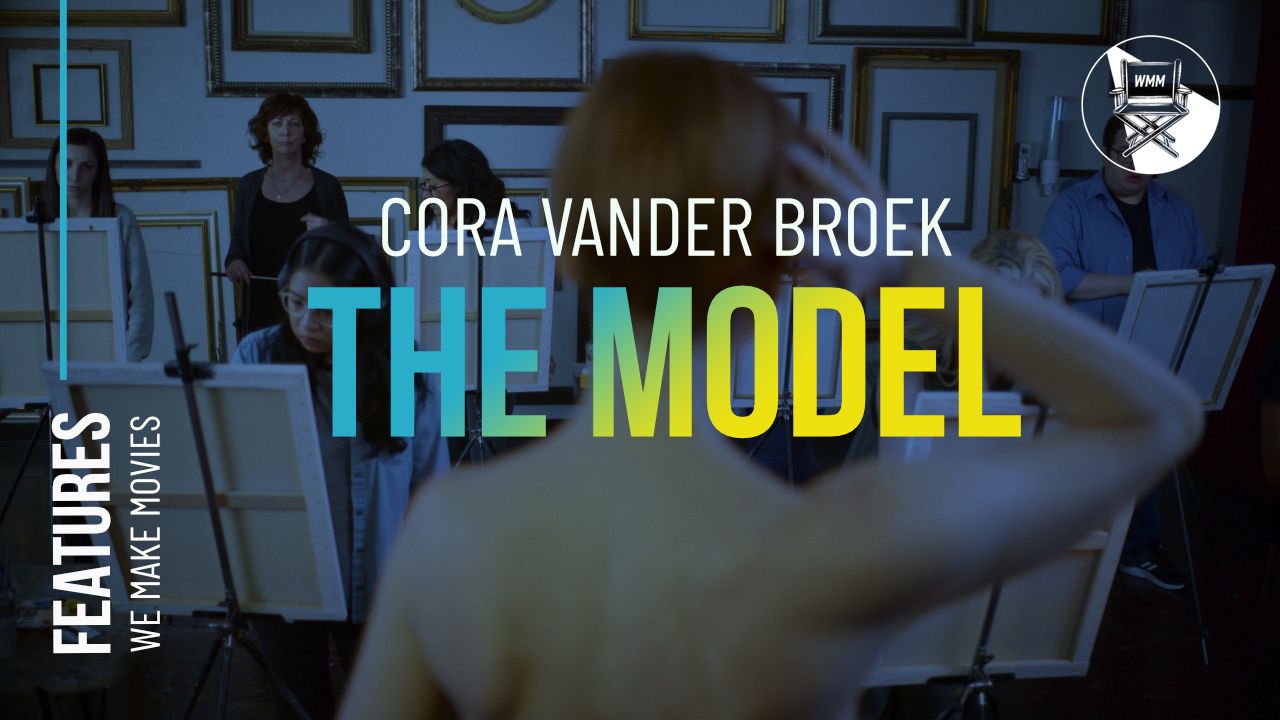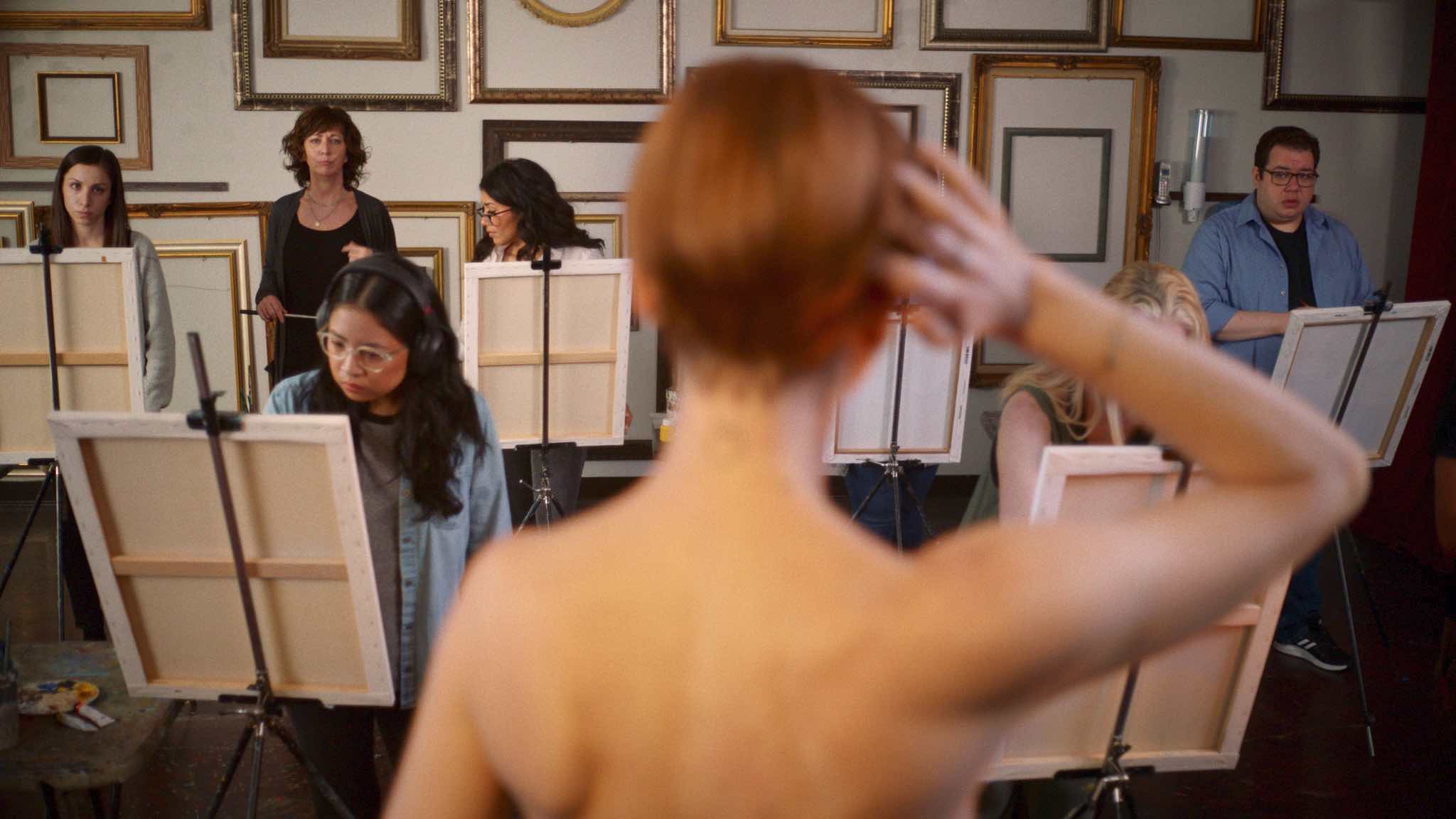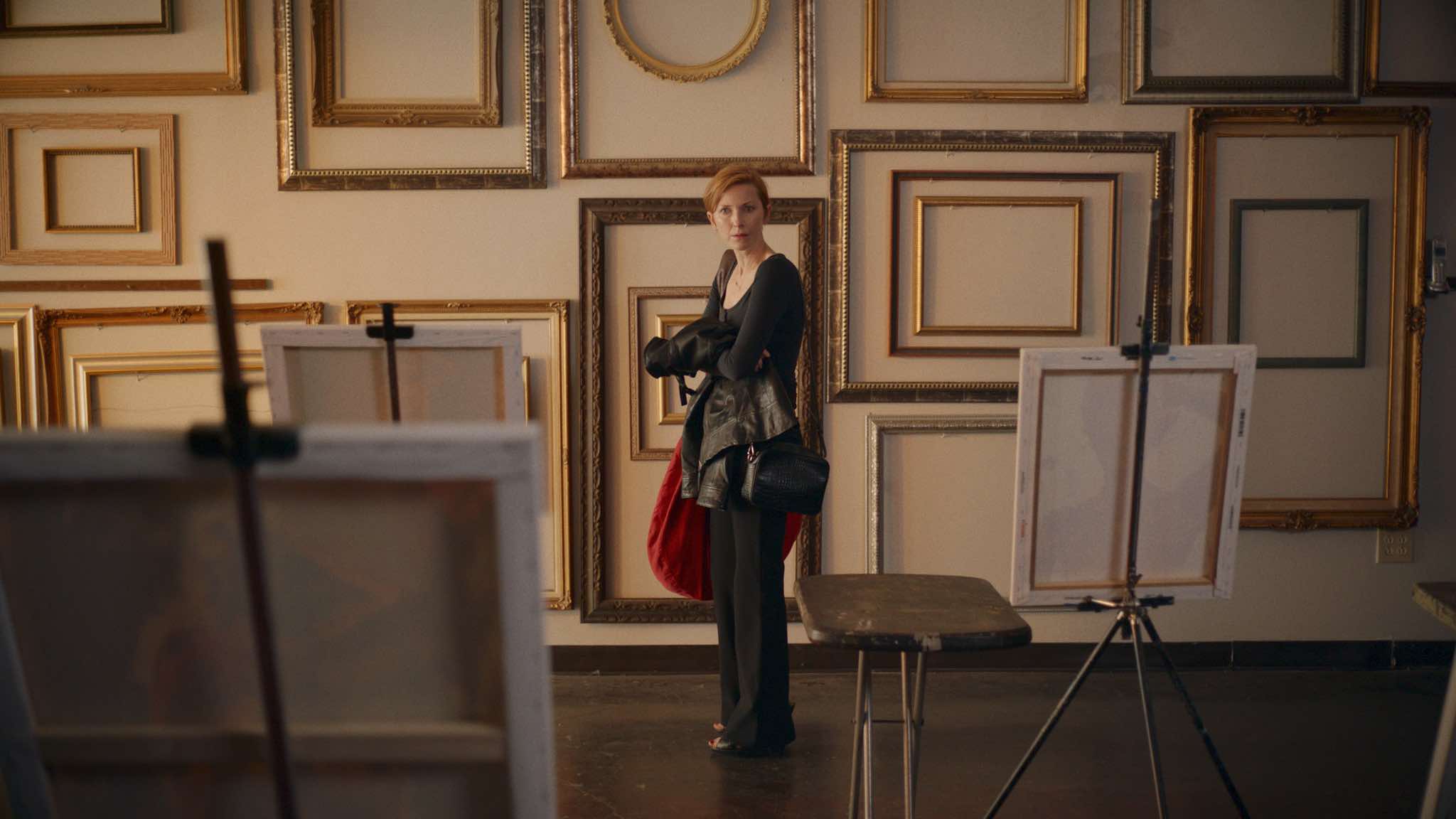Writer/Actor/Producer Cora Vander Broek's THE MODEL Explores The Roles Women Choose and The Ones Chosen For Them

In today's world, women are expected to juggle multiple roles in both their personal and professional lives. From being a mother to a CEO, the pressure to excel in every sphere is immense. Writer/Actor/Producer Cora Vander Broek' s and director Stephanie Owens' latest film, THE MODEL, delves into the complexities of a figure model's identity crisis. This female driven project (over half the cast and crew identify as female) is about an aging figure model, pushed to a crisis of identity by her relentless art instructor and ambitious lover. In the course of a sitting, she must decide if she will remain a still life to please others or risk evolving to please herself. As she wrestles against her constraints, what ripple effects could her evolution cause within her and the women around her?
s and director Stephanie Owens' latest film, THE MODEL, delves into the complexities of a figure model's identity crisis. This female driven project (over half the cast and crew identify as female) is about an aging figure model, pushed to a crisis of identity by her relentless art instructor and ambitious lover. In the course of a sitting, she must decide if she will remain a still life to please others or risk evolving to please herself. As she wrestles against her constraints, what ripple effects could her evolution cause within her and the women around her?
We chatted with Cora and Stephanie recently to learn more about how they approached making this short film which will be making the festival rounds this year.
What compelled you to make this film? What was the impetus?
Cora Vander Broek: I'd been thinking of the roles we women play in our personal and professional lives: devoted partner, vacuous muse, ambitious artist, pedantic professor, sexy submissive and so on. Some of these roles we choose but, more often, these roles are chosen for us by society’s expectations. I’ve worked for almost two decades as a professional actor. In my early years I took great pride in being established as one thing . . . excelling at one thing. There was comfort in being tucked safely in a box. I was secure and accepted within its boundaries.
As I’ve grown older, however, this box has begun to cripple me literally and figuratively.  Consequently, I've begun to push against the walls . . . my spirit longing to explore the undefined. Women are accustomed to being labeled and controlled. And it seems we have so internalized this reality that we are often complicit in our own oppression and the oppression of other women. It is this phenomenon, our tendency to limit ourselves and, consequently, the women around us, that we’re exploring in this film.
Consequently, I've begun to push against the walls . . . my spirit longing to explore the undefined. Women are accustomed to being labeled and controlled. And it seems we have so internalized this reality that we are often complicit in our own oppression and the oppression of other women. It is this phenomenon, our tendency to limit ourselves and, consequently, the women around us, that we’re exploring in this film.
What was your process in making this film?
Stephanie Owens: During the pandemic, Cora, Lissa Sherman, and I would gather outside in parking lots or the steps of the South Pasadena public library to have coffee and talk about our creative aspirations. They helped me as I finished my short documentary Downstage, and then we switched our attention to Cora's wonderful script. We spent months discussing it as she wrote revisions, and then encouraged her to make it. I wasn't angling to direct (I promise) but was thrilled when she asked me. I had only worked in nonfiction so I was excited for the opportunity to work on a scripted story, and with brilliant friends.
Immediately we decided we wanted to be as collaborative and generous as possible, even if it meant doing things differently and taking more time where we could. While most of us had extensive experience in some element of production we also each found ourselves doing something new. For example, this was Cora's first time producing, and my first time directing actors and working with a script. Thankfully we built a supportive team where we could all ask questions and learn from one another. Carina Chavda joined as a producer and worked closely with Cora, while Lissa and I dug into the story and vision of the film. I saw the short Honeymoon, directed by Amy Aniobi, and was impressed by the cinematography of that film, which encouraged me to reach out to Kalilah Robinson to DP. She signed on and has contributed so much insight and expertise, I couldn't imagine the film without her. Similarly, we couldn't have crafted the sense of growing unsettledness without the skill and creativity of our sound designer Kari Rae Seekins. At each turn, everyone contributed their unique mark to the film.
From L to R - Carina Chavda (Producer), Stephanie Owens (Director), Cora Vander Broek (Writer), Kalilah Robinson (DP).
We also tried to build in extra time for creative processing throughout the production. For example, we made sure to have rehearsal time with Helen Sadler and Cora, and our intimacy coordinator before even getting to set so that everyone felt comfortable. We allowed months for editing so our editor Clare Cooney and I could have time to sit with each cut, which was invaluable to striking the right tone and pace for the film.
CVB: I had had a version of the script sitting on my computer for years. Like many creatives, when the pandemic hit I found myself with time on my hands. I was in a “pandemic pod” with two good friends and creators (Stephanie Owens and Lissa Sherman) and we began talking about our creative work and I brought up the script. And from there I was inspired to revisit it. Stephanie agreed to direct the film and Lissa to story producer. They were invaluable. The film wouldn’t be what it is without them. We decided that it was vital that the film’s crew and cast be predominantly female and we achieved that! The incredible Carina Chavda, based in Boston, soon signed on as producer. COVID was still rampant so pre-production was mostly done virtually but, despite all that, we put together a talented team through word of mouth and recommendations. I really appreciated my independent film community here in LA. Everyone we reached out to was so generous and willing to share their thoughts, experience and connections. We were lucky to get Kalilah Robinson as our DP and she brought with her an exceptional camera department made up of mostly women. David White was our production coordinator and kept everything organized and moving smoothly. I, along with my husband Matt Brumlow and dear friend and writer Kimberlee Soo (Kimberlee had originally encouraged me to write the script years ago), executive produced and financed the film together. We decided not to go the crowd funding route mainly because it was the height of the pandemic and we knew our community was already pushed to the brink. Our principal cast was Helen Sadler, Elaine Rivkin and myself. We shot the film in LA over four days the first week of Feb 2022. We had two major locations… an art studio and the home of one of the main characters. We found the lovely The Art Studio Pasadena and a house through Peerspace. The owner of the art studio, Mosig Dermovsesian, and his daughter contributed the paintings used in the film. They were so generous and lovely. When we shot in early February it was during a COVID surge so that was pretty stressful. We ended up having to replace our sound mixer last minute because of COVID but other than that we got through it without any major disasters. After the shoot we decided to take our time with post-production just to ensure the quality of the final product. Clare Cooney edited the film and Kari Rae Seekins did the sound design. They were both a dream to work with. We've just begun the festival submission process and are excited to see how the film will be received.
What was the most challenging aspect of getting this film together?
SO: Working during a pandemic was very challenging. We had to be nimble and not succumb to panic when COVID-related changes surfaced last minute. We also had a lean budget which we made work, but required many of us to take on more than one role, which we did because of how much we believe in the project.
CVB: Well obviously the pandemic was a pretty challenging factor. We decided to move forward on production despite COVID . Everyone in the industry was still trying to figure out how to work during this unprecedented time and there was a big learning curve. We wanted to create but also maintain a safe and responsible working environment for everyone involved. We implemented the standard SAG safety protocols and despite having to replace our sound mixer last minute, made it through unscathed.
Also, for me, personally, although I had decades of experience as an actor, this was my first time writing, producing & financing a film. Everything was new and I was learning on the go. It required a lot of humility, transparency and the willingness to reach out to others for advice and input. To be kind to myself if I made a mistake. To trust I had the right to take up space and share my story. I had to constantly silence the voices in my head telling me I wasn't enough.
Did you collaborate with WMM or use any of our services, and if so, how was that for you?
CVB: We did collaborate with WMM and they were life savers! We were in pre-production trying to figure out our insurance situation and navigate SAG protocols.  My friend Vance Smith (a producer, director and actor here in LA) highly recommended WMM as a one-stop shop for any independent filmmaker trying to get their film made. I took his advice and ended up getting insurance through WMM and invaluable help with SAG-AFTRA. I felt so supported and cared for! They took quite a bit of weight off my team's shoulders going into production. I couldn’t recommend WMM more!
My friend Vance Smith (a producer, director and actor here in LA) highly recommended WMM as a one-stop shop for any independent filmmaker trying to get their film made. I took his advice and ended up getting insurance through WMM and invaluable help with SAG-AFTRA. I felt so supported and cared for! They took quite a bit of weight off my team's shoulders going into production. I couldn’t recommend WMM more!
SO: I would shoot more inserts. I think my documentary sensibility often came in handy, especially in terms of staying on schedule. What a great luxury to get multiple takes! We managed to get through everything we needed in the 3 and half days of shooting, but with a little bit more time I would've shot even more atmosphere.
CVB: Obviously hindsight is 20/20 and I feel any “mistakes” that were made actually taught me so much about myself and the filmmaking process. Consequently, I don’t know that there’s a lot I’d do differently. However, If I had to pick one thing . . . I’d trust my gut more and question myself less. I think it took me a while to believe I “deserved” to be more than just an actress. That I had the right to be a writer, a producer, and a filmmaker and actually excel at it. Consequently, that impacted my confidence and my innate trust in myself at certain points during the process. I had to get over that old imposter syndrome and refuse to let it get in the way.
What are your aspirations for the film?CVB: We’ve just begun the film festival submission process and are very excited. Our plan is to start there and reassess depending on how things go. We have a landing page for the film at www.themodelfilm.com that features info on the cast, crew and will soon include our trailer. We plan to launch an Instagram page in the next month or so.
SO: I would love to experience the film in a theater with audiences and get the opportunity to speak with people about any links they have to the story.
Who are the types of people most likely to watch your movie?CVB: Individuals, especially women/female identifying, thinking about and/or dealing with aging, objectification and relevancy in a society that offers very little education or support in those areas.
If you could, how would you improve the film industry?CVB: More women in all aspects of the industry. More female driven stories.


